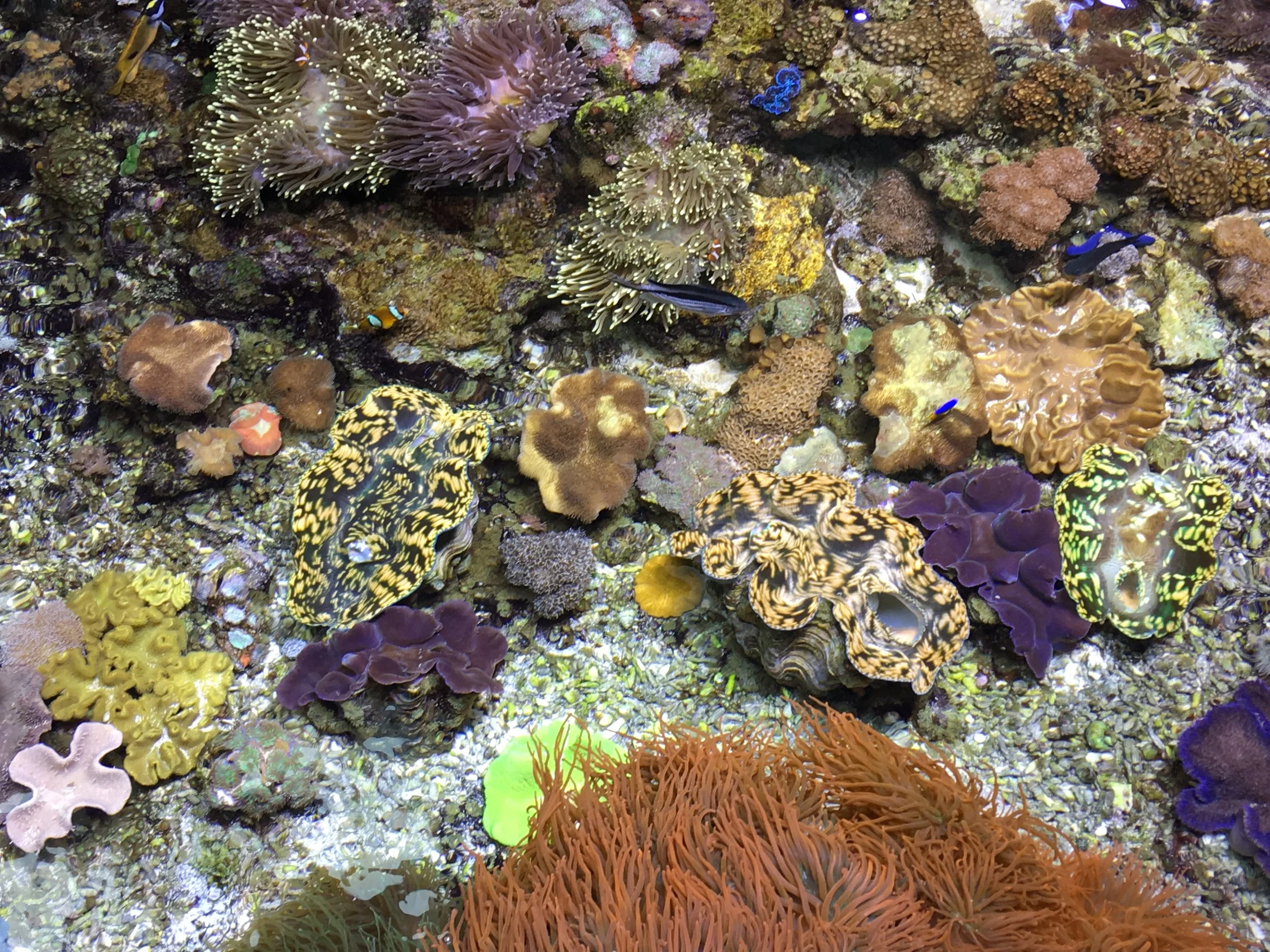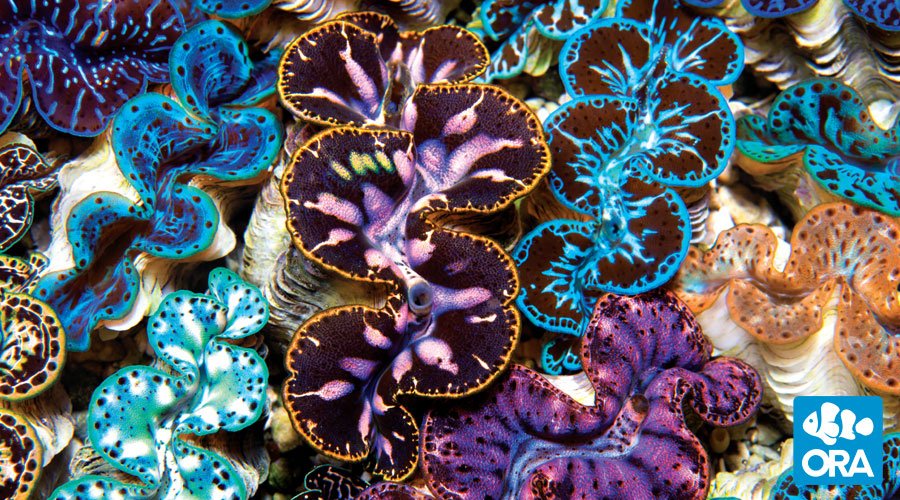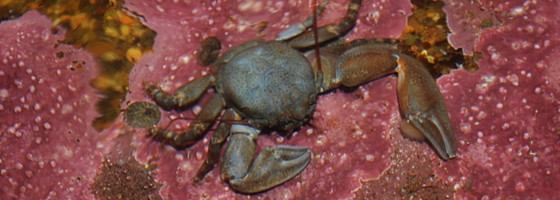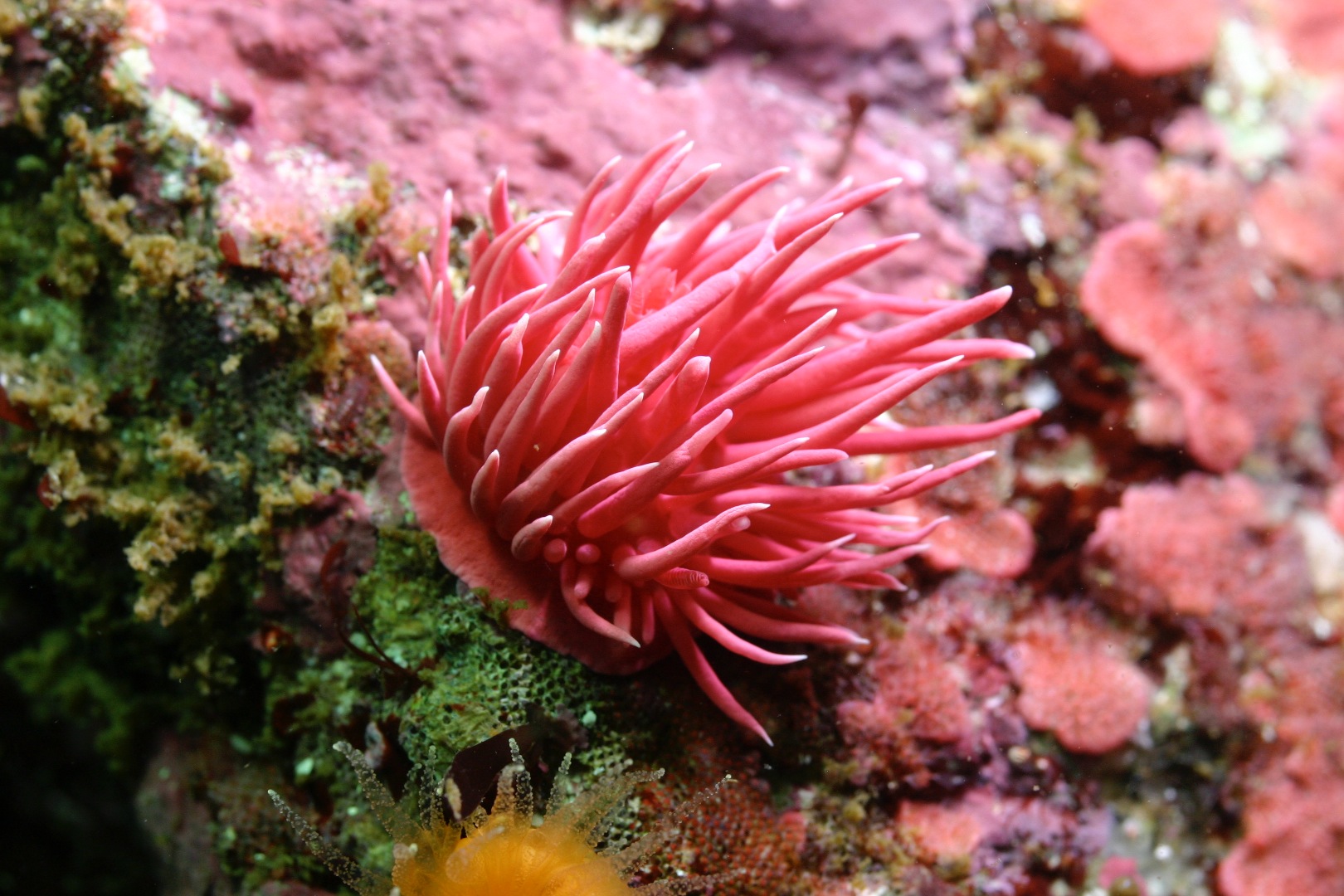Giant Clam Physiology
Tridanca maxima.
Giant clams (genus Tridacna) are among the most charismatic of coral reef inhabitants and are important both culturally and economically in many developing island nations where their annual export production values can exceed $90 million USD (~5% of total GDP). Giant clams also host symbiotic algae (genus Symbiodinium) from which they obtain a significant portion of their daily energy needs, a characteristic shared by many reef-building corals.
Giant Clams use Acid to bore into coral
The giant clam Tridacna crocea, native to Indo-Pacific coral reefs, is noted for its unique ability to bore fully into coral rock and is a major agent of reef bioerosion. However, T. crocea's mechanism of boring has remained a mystery despite decades of research. By exploiting a new, two-dimensional pH-sensing technology and manipulating clams to press their presumptive boring tissue (the pedal mantle) against pH-sensing foils, we show that this tissue lowers the pH of surfaces it contacts by greater than or equal to 2 pH units below seawater pH day and night. Acid secretion is likely mediated by vacuolar-type H+-ATPase, which we demonstrate (by immunofluorescence) is abundant in the pedal mantle outer epithelium. Our discovery of acid secretion solves this decades-old mystery and reveals that, during bioerosion, T. crocea can liberate reef constituents directly to the soluble phase, rather than producing sediment alone as earlier assumed.
Hill RW, Armstrong EJ, Inaba K, Morita M, Tresguerres M, Stillman JH, Roa JN, Kwan GT. (2018) Acid secretion by the boring organ of the burrowing giant clam, Tridacna crocea.
Biology Letters 14 Online
Model of zooxanthellae tubule system in T. maxima as compared with the endosymbiotic arrangement in corals.
(Left) In giant clams, Symbiodinium are hosted extracellularly in digestive tubules (ZT) bounded by host clam cells (blue) that express VHA in apical membranes (green). (Right) In corals, algae are housed intracellularly in a membrane-bound symbiosome (SB) containing VHA. In both taxa, metabolic CO2 is converted by host carbonic anhydrase (CA) to H+ and HCO3 − (1). H+ is then actively transported into the tubule lumen by clam VHA (green/yellow structure; 2). HCO3 − follows via an unknown bicarbonate transport mechanism (gray circle; 3), whereupon putative host-derived CA catalyzes the reconversion of both substrates into CO2 (4). CO2 diffuses into Symbiodinium cells (5) where it is transported by unknown mechanisms to algal chloroplasts. Algal photosynthesis drives the production of O2, which diffuses into host tissues, and sugars (6), which are translocated by unknown mechanisms to host mitochondria where they fuel oxidative catabolism and production of metabolic CO2 (7) forming a link to the conversion of CO2 to H+ and HCO3 − by CA (1)
Giant Clams Help their Algal Symbionts perform photosynthesis
Like reef-building corals, giant clams host symbiotic dinoflagellate algae (Symbiodinium) that significantly contribute to their energy budget. In turn, Symbiodinium rely on the host to supply inorganic carbon (Ci) for photosynthesis. In corals, host ‘proton pump’ vacuolar-type H+-ATPase (VHA) is part of a carbon-concentrating mechanism (CCM) that promotes Symbiodinium photosynthesis. In a recently published study, I show that VHA in the small giant clam (Tridacna maxima) similarly promotes Symbiodinium photosynthesis. VHA is abundantly expressed in the apical membrane of epithelial cells of T. maxima's siphonal mantle tubule system, which harbors Symbiodinium. Furthermore, application of the highly specific pharmacological VHA inhibitors bafilomycin A1 and concanamycin A significantly reduced photosynthetic O2 production by ∼40% demonstrating that VHA activity in the siphonal mantle confers strong energetic benefits to the host clam through increased supply of Ci to algal symbionts and subsequent photosynthetic activity. The convergent role of VHA in promoting Symbiodinium photosynthesis in both the giant clam siphonal mantle tubule system and coral symbiosome suggests that VHA-driven CCM is a common exaptation in marine photosymbioses that deserves further investigation in other taxa.
Armstrong EJ, Roa JN, Stillman JH, Tresguerres M. (2018) Symbiont photosynthesis in giant clams is promoted by V-type H+-ATPase from host cells.
Journal of Experimental Biology 221: jeb.177220 Online








